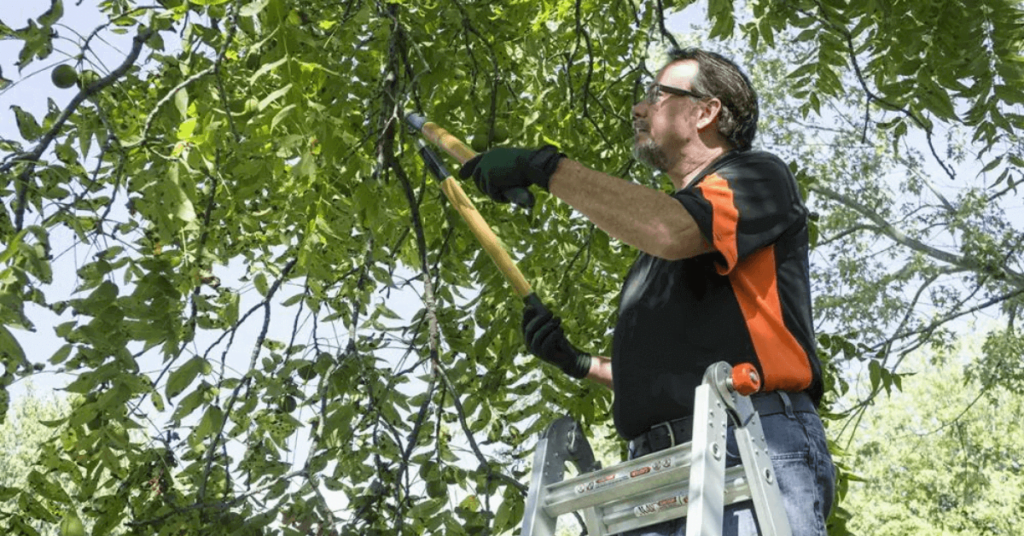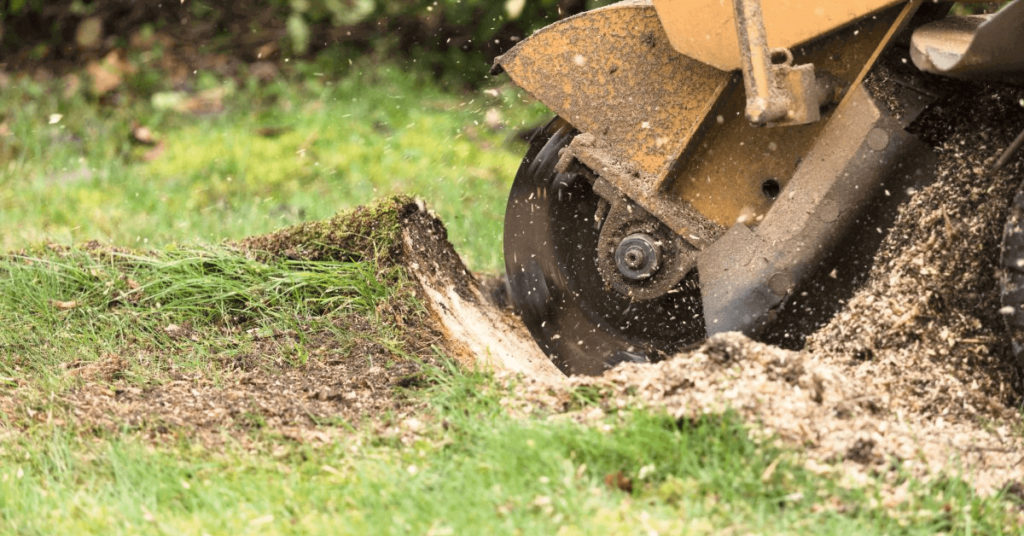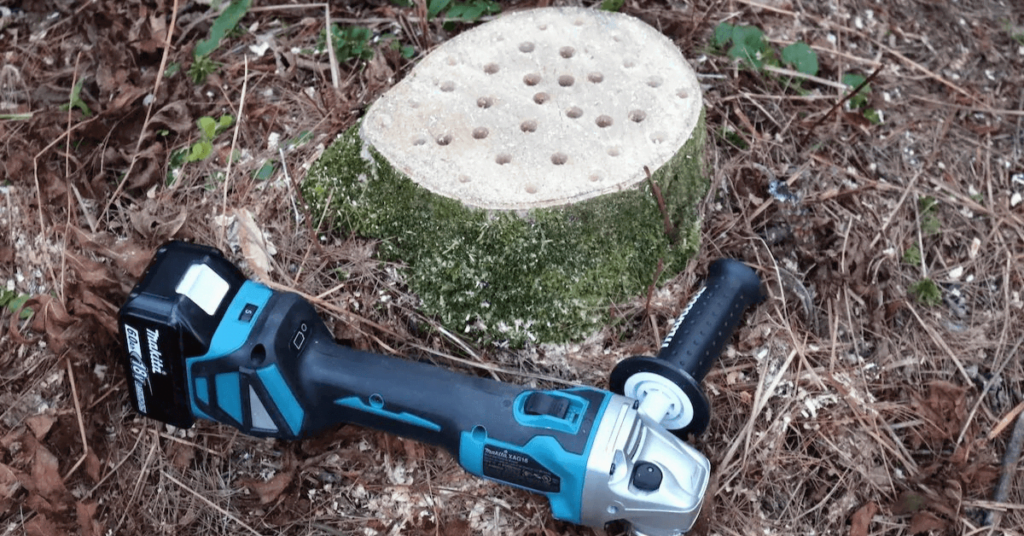Trees are a beautiful addition to any home or property, often providing shade and wildlife habitat. However, when big branches hang over the house they can become a nuisance. It is important to keep your trees properly trimmed to maintain safety and avoid damage.
But who is responsible for cutting overhanging tree branches? Well, depending on where you live, there could be many answers to this question.
In this blog post, we’ll dive deep into understanding who holds responsibility when dealing with overhanging tree branches. We’ll also take a look at who is responsible for cutting overhanging tree branches and how to best go about cutting a tree branch safely and legally.
Cutting Overhanging Tree Branches
The responsibility for trimming overhanging tree branches depends on the type of tree and who owns it. If a tree is located on your property, you are responsible for making sure it is trimmed and that any branches do not overhang onto a neighboring property.
If a tree is located on a neighboring property, you should contact the owner and ask that they trim any branches that overhang onto your property.
If the tree is located on public property, you should contact your local town or city’s tree department to request a trim. In some cases, the local government may be responsible for maintaining public trees and can help to ensure that any branches are safely trimmed.
Additionally, some states may have specific regulations or laws in place regarding the maintenance of trees on public and private property. It is important to note that laws may vary from state to state, so it is important to check your local regulations before taking any action.
How often should overhanging tree branches be trimmed?
The frequency of trimming overhanging tree branches depends on the species of tree and its growth rate. Generally, pruning should be done every 1-2 years for trees with a moderate to rapid growth rate such as maple and elm. For trees with a slow growth rate, like oak and birch, pruning can be done every 3-5 years.
However, if there are any health concerns with the tree such as dead or broken branches, it should be pruned immediately. It is also important to remove any sucker growth at the base of the tree. This can be done when pruning overhanging branches. It is best to consult with a certified arborist for specific advice on your particular tree species and trimming schedule.
Can you trim your neighbor’s tree branches that hang over into your yard?
The short answer is no. It’s your neighbor’s responsibility to maintain their trees and trim them back if the branches are encroaching on your yard. You can suggest that your neighbor trim their tree but it’s ultimately up to them.
In some states, it’s illegal for you to prune your neighbor’s tree without permission. Despite this, if the branches are dangerous and likely to cause damage, you may be able to prune them without permission. However, it’s always best to check the laws in your state first.
If pruning the tree isn’t possible without permission, you can ask your neighbor to trim the branches. If they refuse, you can hire an arborist to come to do the job. Though it might cost money, this is usually a better option than going to court with your neighbor.
In any case, it’s always best to try and maintain a good relationship with your neighbor. If both parties are willing to communicate and cooperate, it can save you a lot of time and money in the long run.
If you’re still having trouble with your neighbor’s encroaching tree, then it may be wise to seek legal advice. A lawyer can help you understand your rights and work out the best solution for you.
Who is responsible for cutting overhanging tree branches in Pasadena, MD?
In Pasadena, the responsibility for cutting overhanging tree branches falls to the property owner. It is illegal in most cities and counties to cut any tree branch that hangs over a property line without the consent of the neighbor or local authority. If branches hang over a public street, then it is the responsibility of the municipality to take care of it. Depending on the circumstances, private tree trimming services may be hired to perform this work.
In some cases, a permit may be required. Before cutting any tree branches, it is important to check with the local government or other authorities to ensure that the work complies with local regulations.
Additionally, property owners should be aware that cutting tree branches may have implications for both liability and insurance coverage. Therefore, it is important to take all necessary precautions when performing any tree trimming or removal activities.
Hazards of trees that overhang onto your neighbor’s property.
- Overhanging tree branches can damage your neighbor’s home or property.
- They can block sunlight and increase the rate of shade covering your neighbor’s house, resulting in mold growth and an unhealthy living environment.
- Falling leaves and dead branches can clog gutters, cause water to pool on their property and lead to drainage issues.
- Trees can develop root systems that spread onto your neighbor’s land and disrupt the structure of their home and landscaping features.
- Insect infestations from trees that overhang onto your neighbor’s property can be a nuisance and may cause further damage to the area.
- If a storm damages the tree and it falls on your neighbor’s property, you could be liable for any damage caused.
- Your neighbor may file a lawsuit against you if they experience any of these issues due to an overhanging tree from your property.
FAQs – Responsible for Cutting Overhanging Tree Branches
Can I insist my Neighbor cut his trees?
No, you cannot insist your neighbor cut their trees without a court order. Trees are considered to be an asset of the owner and cutting them down is often illegal. It is not recommended to insist your neighbor cut his/her trees without proper communication.
If you believe that a tree or its branches are blocking sunlight, damaging a wall or creating an unsafe condition, speak with your neighbor first and discuss the issue. You should also contact your local government or a lawyer to discuss the matter further.
What are my rights if a Neighbor’s tree overhangs my garden?
Your rights depend on the laws of your state or city. In some places, you may be able to trim back the branches and roots of a tree that intrudes onto your property without permission from the neighbor who owns it. However, this is not always the case, so it’s important to check local ordinances first.
In some jurisdictions, you may have to get a court order or special permission from your municipality to trim branches and roots. Before making any changes, consider reaching out to your neighbor directly and seeing if they’re willing to work something out. you might agree on a trimming schedule or an alternate tree-planting solution.
Final Words
According to most city ordinances, cutting overhanging tree branches is the responsibility of the property owner on whose land the tree stands even if said branches are hanging over your own property.
If you have an issue with overhanging tree branches, your best bet is to contact the appropriate tree service company near you and let them handle it. We hope this article has provided you with some useful information on dealing with overhanging tree branches. Thank you for reading!



